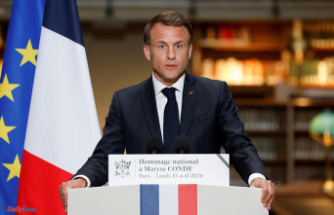Ontario’s New Democrats have rediscovered the virtues of campaigning from the left. Their solution for the province’s electricity pricing woes is to re-embrace the old-time religion of public power.
Critics accuse them of pie-in-the-sky thinking. And their plan, entitled “Pay less; own more” does skip over many details.
Still, Andrea Horwath’s NDP is onto something. Ontario’s experiment in the stealth privatization of what used to be called Ontario Hydro is a failure. It hasn’t matched generating capacity to need. It has produced unnecessarily high electricity rates.
Its method of pricing electricity generation, transmission and distribution, while logical in the abstract, makes little sense to consumers who must pay the bills.
All of this has been brought into focus by the Ontario Liberal government’s bizarre decision to turn Hydro One, the province’s money-making electricity transmission monopoly, into a private corporation.
Electricity has been a politically explosive issue in Ontario since the beginning of the 20th century. In 1906, a Conservative government created a Crown corporation, the forerunner of Ontario Hydro, to deal with it.
Over the years, Hydro — while grandiose and overbearing at times — did what it was supposed to do. It provided electrical power at a price that ratepayers could afford.
That began to change in the late 1990s when Mike Harris’s Conservatives split apart Hydro’s transmission and generation facilities as the first step in what was to be the privatization of both.
The Tory attempt to privatize Hydro One, the transmission arm, was derailed by the courts.
But the Dalton McGuinty Liberals, who succeeded the Tories, did manage to quietly privatize some of the province’s generating capacity.
They did so by insisting that any new electricity production in the province — whether powered by gas, hydro, wind or sun — be undertaken not by Ontario Power Generation, their own Crown corporation, but by private interests.
These private interests were paid handsomely to provide electricity whether it was needed or not.
In latter years, much of it hasn’t been needed — which has led to Ontario buying electricity at high rates from domestic generators and dumping it in the U.S. at bargain-basement prices.
The New Democrats say they would let these contracts expire and replace pricey privately generated electricity with cheaper public power. On the transmission side, they would buy back the portion of Hydro One that has been privatized and make it once again a fully publicly owned monopoly.
On pricing, the NDP would, in effect, dissolve the false dichotomy between power consumption (how much electricity is used) and distribution (the cost of delivery). In practical terms, that would translate into lower rates for rural and seasonal users.
The New Democrats would also allow consumers to opt out of the time-of-use farce, the largely unsuccessful attempt to coerce people to reduce power consumption at peak times (like dinner time) by making it more expensive.
Throughout the policy paper, there is a certain amount of hand-waving. The NDP engages in wishful thinking when it assumes Ottawa would eliminate its portion of the HST on electricity. The cost of buying back privatized Hydro One shares is not fully accounted for. The paper is silent on the fate of wind and solar power. The tough decisions, such as whether to refurbish Ontario’s pricey nuclear plants, would be handed off to a panel of experts for study.
Much of this is thin gruel.
Still, there are two interesting aspects to the New Democrats’ rediscovery of public enterprise. The first is that they are largely correct. Public ownership doesn’t make sense for some things. But it does for electricity generation and transmission which, by their nature, lend themselves to monopoly.
It will cost money in the short run to reverse the Liberal government’s Hydro One privatization fiasco. But in the long run, both consumers and the provincial treasury will benefit.
Second, it is intriguing that the Ontario NDP has rediscovered the left. Public power used to be a pillar of NDP policy, particularly under former leader Howard Hampton. But in the 2014 election campaign platform it rated not even a mention.
That campaign, it will be recalled, was the one in which Horwath’s NDP attempted (unsuccessfully) to outflank the Liberals from the right by emphasizing fiscal probity and a love of small business.
Nationally, the NDP federal leadership race has finally sputtered to a start. The three declared contenders, MPs Peter Julian, Charlie Angus and Guy Caron, have so far been relatively cagey in their policy prescriptions. We shall see if this left thing catches on.
Thomas Walkom appears Monday, Wednesday and Friday.
Thomas Walkom appears Monday, Wednesday and Friday.
The Toronto Star and thestar.com, each property of Toronto Star Newspapers Limited, One Yonge Street, 4th Floor, Toronto, ON, M5E 1E6. You can unsubscribe at any time. Please contact us or see our privacy policy for more information.
Our editors found this article on this site using Google and regenerated it for our readers.












